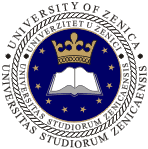Job standardization as a mediator of the using information technologies impact on employee efficiency
The content of work in all types of workplaces has been intensively changing in the last few decades, especially in the part of the way of doing work and increasing efficiency. The mentioned dynamic of changes is caused by alters in the technical system that is increasingly relying on information technology and automation systems, where today one p...
By Elvir Čizmić, Elvir Karajbić, Đevad Šašić
Evaluating the bank profitability in euroized economies
Financial euroization is a significant phenomenon in developing countries. The key financial institutions for macroeconomic stability in these countries are the banks. Conversion of most of the financial assets and liabilities into foreign currency creates a currency mismatch between the assets and liabilities in domestic and foreign currency. Bank...
By Kiril Jovanovski, Milanovikj Chkalovska
How using virtual reality can improve B2B marketing
The possibilities of virtual reality in B2B marketing are increasingly recognized in scientific discussions as well as articles on interesting examples of early adopters such as IKEA and Airbus. However, while there is a growing recognition of its potential, the specific impact of virtual reality on B2B marketing remains part of the unexplored rese...
By Almir Klico
Relationship between organizational configurations and competing values culture model
Organizational configuration affects a number of management components, both hard and soft. Hard components include: organizational structure, strategy and control, and soft components are: organizational culture, organizational learning, leadership, motivation, organization power, organizational change, rewarding employees, evaluating performance ...
By Dženan Kulović, Dijana Husaković, Esmir Husetović
Relationship between the quality of information from ERP systems and business performance: Controlling analysis using DuPont system
The aim of this paper is to determine the relationship between the quality of information from the Enterprise Resource Planning system (ERP system) and business performance. The quality of information from the ERP system is assessed using a survey questionnaire examining the end users of the ERP system, namely middle and top management because they...
By Vesna Pavković, Dražena Gašpar, Dominik Jukić
The role of top management in quality management according to BFC SEE standard
Business Friendly Certification South-East Europe (BFC SEE) is a unique program for improving the quality of services in municipalities in the region of South-East Europe, which is available to companies and potential investors. BFC SEE provides the top management of municipalities with a clear roadmap on how to create a favorable business environm...
By Đevad Šašić, Venan Hadžiselimović, Elvir Čizmić
Evaluation of the revised Z'-score model as a predictor of a company's financial failure
Under contemporary business conditions, there are numerous models used for the assessment of a company's financial situation and the prediction of the likelihood of its bankruptcy. These models have been mainly developed using the company's financial information. One of them is the Altman Z-score model. The model separates financially successful an...
By Emira Kozarević, Dženita Pirić
Bilateral trade trends and patterns of Bosnia and Herzegovina: Case of trade with Turkey
A country's trade pattern reflects its supply (export) and demand (import) specialization indicating national performance and competitiveness in the foreign as well as in the domestic market. By applying two different concepts of trade specialization (one based on traditional trade theories of comparative advantages and the other based on modern tr...
By Snježana Brkić, Amira Velić
The effect of materialistic and nonmaterialistic motivational factors to employees' commitment to work
The success of each business relies on the employees' commitment to work, i.e., how and in which way employees perform their work. When consumers are offered the same or similar products produced by different companies and at different prices, and when the company's business result greatly depends on the quality of the work done, company management...
By Suvad Isaković, Ajdin Isaković, Kanita Isaković
The significance of R&D activities for managing intellectual capital of enterprises
Enterprises are developing, increasing their profits, value and competitiveness based on successful synergies of human, structural and relational intellectual capital. In addition, R&D (Research and Development) has been acknowledged as a crucial contributor to the competitive advantage in today's competitive market. By performing R&D activ...
By Bojan Krstić, Ivana Janjić, Milica Jovanović, Sandra Milanović




